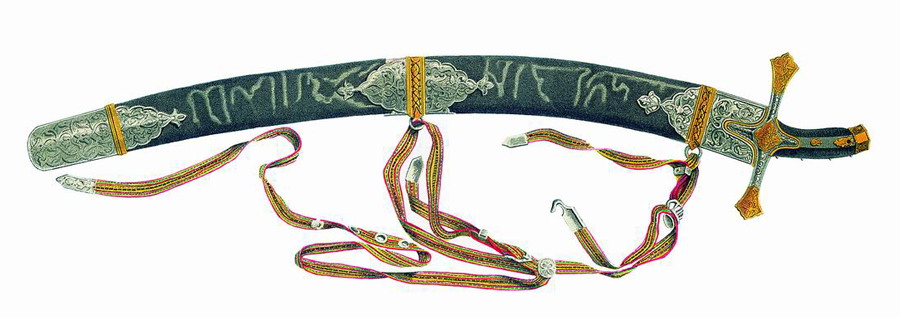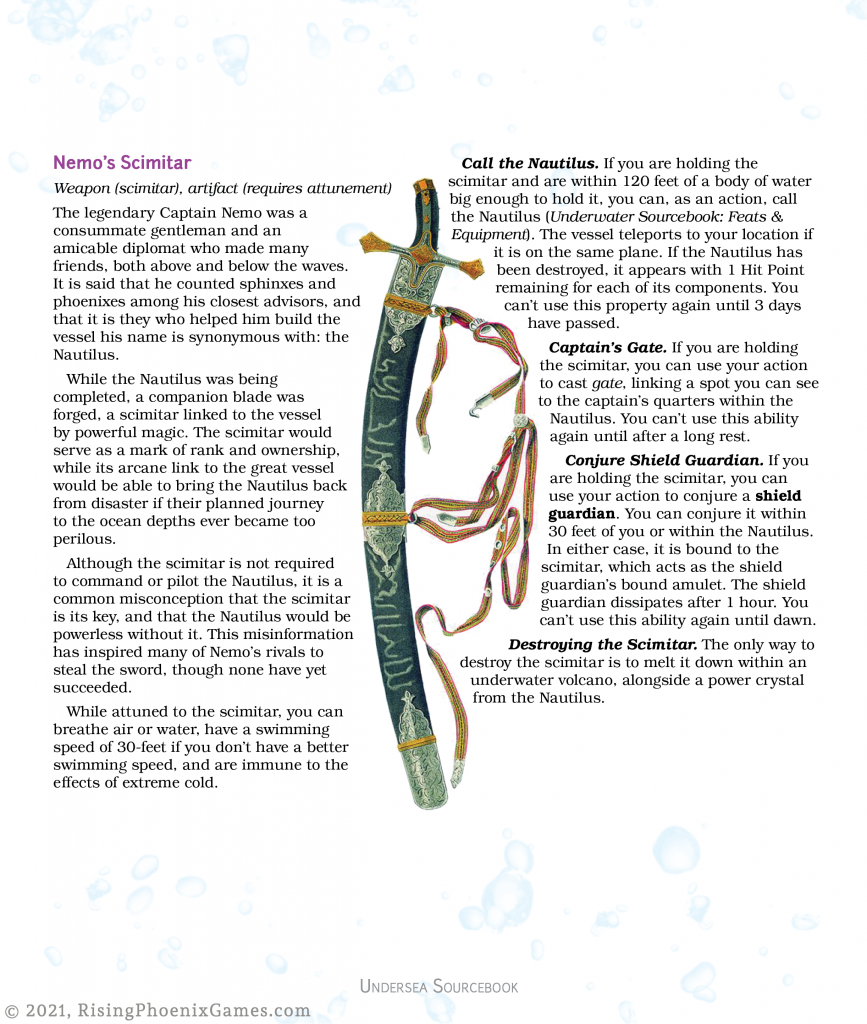Captain Nemo’s scimitar is a powerful artifact that you can add to your undersea Dungeons & Dragons 5e campaign.
Nemo’s Scimitar
Weapon (scimitar), artifact (requires attunement)
The legendary Captain Nemo was a consummate gentleman and an amicable diplomat who made many friends, both above and below the waves. It is said that he counted sphinxes and phoenixes among his closest advisors, and that it is they who helped him build the vessel his name is synonymous with: the Nautilus (see Undersea Sourcebook: Feats and Equipment).

While the Nautilus was being completed, a companion blade was forged, a scimitar linked to the vessel by powerful magic. The scimitar would serve as a mark of rank and ownership, while its arcane link to the great vessel would be able to bring the Nautilus back from disaster if their planned journey to the ocean depths ever became too perilous.
Although the scimitar is not required to command or pilot the Nautilus, it is a common misconception that the scimitar is its key, and that the Nautilus would be powerless without it. This misinformation has inspired many of Nemo’s rivals to steal the sword, though none have yet succeeded.
While attuned to the scimitar, you can breathe air or water, have a swimming speed of 30-feet if you don’t have a better swimming speed, and are immune to the effects of extreme cold.
Call the Nautilus. If you are holding the scimitar and are within 120 feet of a body of water big enough to hold it, you can, as an action, call the Nautilus (Underwater Sourcebook: Feats & Equipment). The vessel teleports to your location if it is on the same plane. If the Nautilus has been destroyed, it appears with 1 Hit Point remaining for each of its components. You can’t use this property again until 3 days have passed.
Captain’s Gate. If you are holding the scimitar, you can use your action to cast gate, linking a spot you can see to the captain’s quarters within the Nautilus. You can’t use this ability again until after a long rest.
Conjure Shield Guardian. If you are holding the scimitar, you can use your action to conjure a shield guardian. You can conjure it within 30 feet of you or within the Nautilus. In either case, it is bound to the scimitar, which acts as the shield guardian’s bound amulet. The shield guardian dissipates after 1 hour. You can’t use this ability again until dawn.
Destroying the Scimitar. The only way to destroy the scimitar is to melt it down within an underwater volcano, alongside a power crystal from the Nautilus.

Hi there, I’m Rodney.
Writer, Game Designer, Editor, Kitbasher, Skateboarder, and Ork ‘Ed Banga. But Nothing Without Christ!




















